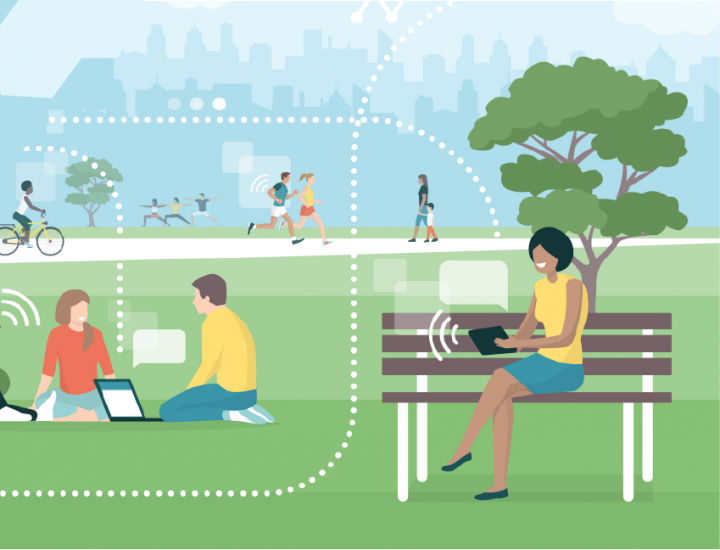Roy Receives $150K NSF Award to Expand Wi-Fi Access in Regional Parks
Nirupam Roy, an assistant professor of computer science with an appointment in the University of Maryland Institute for Advanced Computer Studies (UMIACS), is the principal investigator of the $150K award. He is partnering on the project with the Maryland-National Capital Parks and Planning Commission’s (M-NCPPC) Department of Parks and Recreation.
His team includes Jennifer Roberts, an associate professor of kinesiology; Elizabeth Bonsignore, an assistant research scientist in the College of Information Studies (iSchool); Naomi Sachs, an assistant professor in the Department of Plant Science and Landscape Architecture; Byoung-Suk Kweon, an associate professor in the Department of Plant Science and Landscape Architecture; Tara Burke, program manager of the Smart Cities Initiative at UMD's National Center for Smart Growth Research & Education (NCSG); Kim Fisher, program director of the Partnership for Action Learning in Sustainability (PALS) at NCSG; and Lauren Belle, a sustainability specialist at M-NCPPC.
The one-year project, funded by NSF’s Smart and Connected Communities program, will be tested in several recreational areas in Prince George’s County, Maryland, with hopes that these pilot efforts can be expanded to include all M-NCPPC-administered recreational areas in the county. Watkins Regional Park in Upper Marlboro is being considered as the first location.
Roy says that urban greenspaces provide the public with areas for recreation and relaxation, but they also present an opportunity to increase internet connectivity in communities—especially residential neighborhoods without Wi-Fi access.
His research team believes that community greenspaces—augmented with broadband infrastructure—can serve three crucial functions resulting in individual, infrastructure and community resilience.
First, as an amenity, it would boost overall park use. A recent M-NCPPC visitor survey, for example, found that Wi-Fi access within parks was the most requested service.
Second, these Wi-Fi equipped greenspaces could serve as an important informational and safety tool during disasters. Greenspaces are typically habitable when natural disasters occur, and like with earthquakes and COVID-19, outdoor spaces can be safer—especially when Wi-Fi equipped. People could use the internet to follow the news, receive support via social media, and reunite with family members.
Lastly, broadband infrastructure in parks would be a step toward closing the digital divide by providing residents with basic Wi-Fi access. Roy notes that COVID-19 revealed an alarming number of students without computers and/or internet access who were unable to continue their education online. Research corroborates that, for decades, people unable to afford residential broadband access have relied on a patchwork of libraries, schools, work and “third spaces” like fast-food restaurants to get online.
The project proposes a new model, known as Build Resilience through the Internet and Digital Greenspace Exposure (BRIDGE), by leveraging off-the-shelf Wi-Fi technology, novel algorithms, community assets, and local partnerships to lower the cost of greenspace Wi-Fi and ensure long-term governance.
BRIDGE would adapt a sustainable Wi-Fi infrastructure through direct donations of internet bandwidth from local community donors such as schools, churches and community centers. Roy says the project will lead to measurable, productive shifts in community resilience through stakeholder engagement, collaborative design and management of shared infrastructure.
—Story by Melissa Brachfeld
The Department welcomes comments, suggestions and corrections. Send email to editor [-at-] cs [dot] umd [dot] edu.
